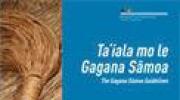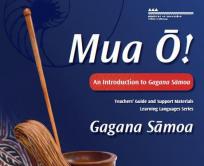Pasifika navigation
- Home
- Widgets
- Effective teaching
- Engaging with parents
- Tapasā
- Talanoa Ako - Pacific Talk About Education and Learning (TA PTEL)
- Pacific Education 2020–2030
- LEAP
- Pacific languages
- About this site
- Resources
- Research
Tālofa lava!
Welcome to the online environment developed to support the teaching of Gagana Sāmoa.

Download the Gagana Sāmoa language curriculum document. These guidelines support additional language learning whilst focusing on teaching and learning that will enable students to achieve worthwhile outcomes.

Explore Mua Ō! An Introduction to Gagana Sāmoa resource from the learning languages series.
This resource has been designed and developed to support the teaching and learning of the gagana Sāmoa language as an additional language in New Zealand schools. It can be used by teachers, including teachers who do not speak gagana Sāmoa or know how to teach languages.
Mua Ō! includes:
Mua O! An Introduction to Gagana Sāmoa (PDF, 4 MB)
Six storybooks have been developed especially to support the Learning Languages Series resource Mua Ō! An introduction to Gagana Sāmoa. Each story gives students opportunities to extend their language and cultural knowledge and to practise reading the target language of specific units in Mua Ō!
*Please note that the glossary page of each storybook contains an "e" after the word Matāʻupu but these Teacher Support Materials do not. Both are correct.
Print copies of these resources are available for schools from Down the Back of the Chair, email [email protected], or phone 0800 226 440. To order: Mua Ō: An Introduction to Gagana Sāmoa, item number 119346.
May Crichton discusses the process used to create Samoan language learning resources through ICT to support and extend children’s confidence with their language, which has actively encouraged both children and their families to speak Samoan at home.